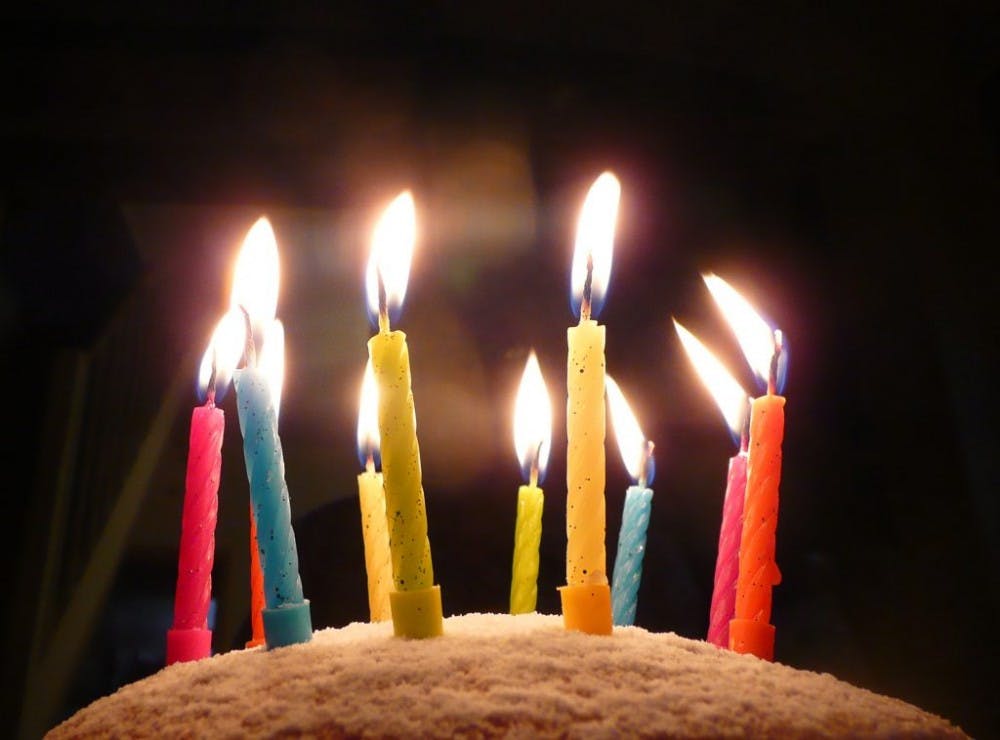The Birthday Problem is an example of something that shocked me when I first learned about it in lecture. The problem simply asks how many people would need to be in a room for there to be a high chance of two people’s birthdays matching up.
You’re probably thinking more than 365 or 366 people, seeing as there are that many possible birthdays out there. That’s exactly what I thought and what most people think upon hearing this question.
However, it turns out that you only need 70 people in a room for there to be a 99.9 percent possibility that two people’s birthdays will match up, and 23 people for there to be a 50.7 percent chance of a match occurring. That’s right, there’s a good chance two people have the same birthday in your calculus section, and a good chance that many pairs of people will have the same birthday in your calculus lecture class.
We actually simulated this experiment during lecture by having people announce their birthdays one by one and move to the center of the room if they shared a birthday with someone else.
We had 10 pairs of people with the same birthday, as well as a triple (that is, three people sharing the same birthday). For reference, my lecture class has approximately 110 people, and I was floored by these results. More than 20 people were involved in this birthday-sharing business.
It turns out the results in lecture were actually lower than expected. For a class of 110 people, there should’ve been 16 pairs of people who had the same birthday. The one triple was to be expected as well (although two triples would’ve been standard, considering the exact value for the expected number of a triple to arise was 1.62, not exactly one or two).
Now that I’m thinking about it again, I actually belonged to a triple birthday group in my high school in a class of about 196 kids. And the fact that I myself actually belong to that group makes the concept feel more real to me.
Since learning about the math behind the Birthday Problem, coincidences involving birthdays no longer have the same wow factor for me anymore. For example, I’m no longer astounded that my suitemate actually shares the same birthday as my dad.
Another interesting problem that seems initially contradictory at first is the Monty Hall problem, which became famously associated with the game show “Let’s Make a Deal,” hosted by Monty Hall.
The problem involves trying to choose the one door (out of three) that contains the prize of an expensive car. The other two doors have goats within. We can definitely agree that so far, there’s a one-third chance of choosing the door with the desirable prize of the car.
But in the show, Monty Hall throws the contestant in for a twist by then opening one of the two doors not chosen, revealing a goat. (The door that he opens is always one that reveals a goat.) He then asks the contestant whether or not they’d like to switch to the remaining closed door, or if they stand by their original choice.
This is where the Monty Hall problem got controversial. Mathematicians argued with each other whether or not switching or staying actually mattered; Many argued that it didn’t matter because no matter what, your chances were 0.50 (split between the two remaining doors), but some argued that switching provided better chances.
One such mathematician who argued this was Marilyn vos Savant, who came under massive criticism and was even insulted after trying to defend this position.
For me, it seemed completely intuitive and obvious that the choice to switch or stay didn’t matter. However, vos Savant was in fact correct: Switching actually bumped a contestant’s chances up to 0.67, and staying meant the contestant’s chances would stay at its original 0.33.
It turns out that when Hall would open one door to reveal a goat, that door’s chances of having a car would become zero, and its one-third chance would essentially be transferred over to the door not chosen, so the door not chosen would then have a two-thirds chance of containing the car.
Yes, probability can be completely counter intuitive, but learning about those counter intuitive cases is part of the fun.






